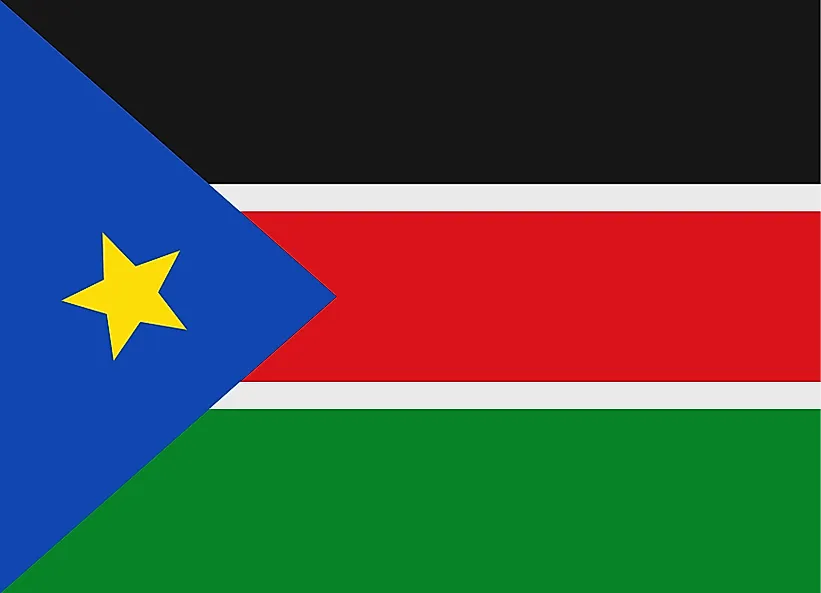
南スーダン
| 大陸 | アフリカ |
| 資本金 | ジュバ |
| 人口 | 12,530,717 |
| GDP | $20.88億ドル |
| 一人当たりGDP | $1,700 |
| ダイヤルコード | + |
| ISOコード(2文字) | SS |
| ISOコード(3文字) | SSD |
南スーダンについて
驚くべき回復力と可能性を秘めた国、南スーダンへようこそ。人口約1,100万人、面積64万4,329平方キロメートルの南スーダンは、多様な景観と豊かな文化的伝統を併せ持ち、2011年の独立以来、世界で最も新しい国際承認国となっています。
地理的特徴と自然の美しさ
南スーダンの地形は、白ナイル川流域から熱帯雨林まで多様な景観を持つ。世界最大級の湿地帯である広大なスッド湿地帯や、同国最高峰のキニエティ山を含むイマトン山脈がある。
サバンナの草原、熱帯雨林、白ナイルの広大な河川水系など、その景観は変化に富んでいる。変化に富んだ地形が多様な生態系を生み出し、アンテロープの大移動など、重要な野生動物の個体数を支えている。
保護地域には、シロヒゲコブの渡りで有名なバンディンギロ国立公園やボマ国立公園などがある。同国の自然保護への取り組みは、持続可能な資源管理を発展させながら、自然遺産を保護することに重点が置かれている。
文化遺産と伝統
南スーダンの文化は、60を超える民族が織り成す豊かなタペストリーのようなもので、それぞれが独自の伝統を持っている。この国の遺産には、多様な言語、伝統音楽、独特の芸術表現が含まれる。
伝統芸能には、ビーズ細工、ボディペインティング、凝ったヘアスタイルなどがある。文化的慣習としては、牧畜の伝統、年齢設定制度、さまざまなコミュニティ間のレスリング競技などがある。
南スーダンの料理は牧畜と農業の伝統を反映しており、キスラ(平たいパン)、ワラワラ(干し肉)、牛乳を使ったさまざまな料理がある。伝統的な共同祝賀行事や語り部は、今でも社会生活の中心となっている。
歴史の旅
南スーダンの歴史は、古代の王国から植民地時代を経て独立に至る。アフリカで最も長く続いた内戦から抜け出し、2011年に独立した。
古代ニロト民族の移住、アングロ・エジプシャンの支配、スーダン国内での独立闘争、そして最終的な主権獲得など、重要な時期がある。スーダンが国家になるまでの道のりは、忍耐の証である。
現代の経済状況
現在の南スーダンの経済は、石油生産、農業、畜産が中心である。同国は重要な天然資源と農業の潜在力を有している。
最近のイニシアティブは、経済の多様化、インフラ整備、農業開発の促進に重点を置いている。南スーダンの若い労働力と天然資源は、その開発努力を支えている。
国際関係とグローバルポジション
南スーダンは国際的なパートナーシップを築きながら、地域組織との積極的な関与を維持している。南スーダンの戦略的立地と資源は、地域的な重要性を高めている。
ご存知でしたか?
- 南スーダンはアフリカ最大級の野生動物の年間移動の本拠地?
- サッド湿地帯は世界最大級の淡水湿地生態系か?
- この国には60以上の固有の言語がある。
- 伝統的なレスリングは、地域社会を結びつける重要な文化的スポーツである?
結論
南スーダンは、決意と可能性を秘めたユニークな国である。広大な湿地帯から山脈まで、多様な民族の伝統から新興の近代的制度まで、南スーダンはその文化遺産を守りながら建設を続けている。国家建設や経済開発などの課題に取り組む中で、南スーダンはチャンスと回復力の国としての地位を維持しながら、前進を続けている。





